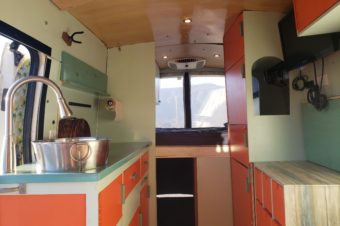Most van builds incorporate at least a handful of roof battens spread throughout the van. Usually of wood, they are used to provide your plywood ceiling something to attach to.
First, the battens are attached to the van roof. Battens are usually placed next to ceiling ribs, so that they can be drilled sideways into the side of the rib, instead of vertically, up into the van roof. Always avoid drilling into the roof if you can help it!
Then, the ceiling plywood is drilled (upwards) into the batten. This allows the plywood to hang from the batten instead of the sheet metal of the roof. The heavier your plywood, or the more attachment points you will have to the ceiling, the more battens you may want to include.
So, roof battens are a simple concept. The application, however, is less than simple, and it varies based on how precisely you want your batten to fit. Depending on the vehicle you have, your van ceiling can have many unique angles, curves and impediments to your ‘simple’ batten plan.
In our 2015 Ford Transit for example, the ribs are not 90 degrees. The walls of the ribs angle down at a slope of about 105 – 108 degrees. There’s also a slight ridge where the rib connects to the ceiling. Both these issues make it difficult to securely and consistently drill rectangular pieces of wood into the ribs. Because of this, we decided to cut an angle and a channel into our 2×4 battens, to enable a better fit.
Jon made several versions, playing with the wood shop machines available at MakerPlace. Eventually, he produced the batten that is featured in our video:
What do you think?





